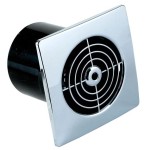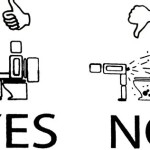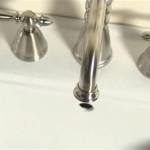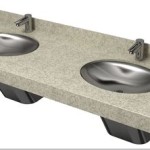Understanding and Resolving Bathroom Toilet Water Valve Leaks When Closed
A leaky toilet water valve is a common plumbing issue that can lead to wasted water, increased utility bills, and potential damage to your bathroom floor. It's often a silent culprit, wasting water even when you aren't using the toilet. Fortunately, understanding the causes and troubleshooting methods for this problem will allow you to repair it effectively.
Causes of Toilet Water Valve Leaks When Closed
There are several reasons why a toilet water valve might leak when closed. These include:
- Worn-out Washer: The washer inside the valve is a small rubber or plastic disc that prevents water from flowing when the valve is closed. Over time, this washer can wear out, become cracked, or lose its elasticity, allowing water to seep through.
- Corroded or Damaged Valve Seat: The valve seat is the surface against which the washer presses to create a seal. If the valve seat is corroded, pitted, or damaged, it can prevent the washer from sealing tightly, leading to leaks.
- Loose or Damaged Valve Stem: The valve stem connects the handle to the valve mechanism. If the stem is loose, damaged, or worn out, it may not be able to fully close the valve, causing a leak.
- Mineral Deposits: Hard water can leave mineral deposits on the valve seat and washer. These deposits can interfere with the seal and cause leaks.
- Improper Installation: If the water valve was not installed properly, it may not seal correctly. This can happen if the valve is not tightened securely, if it's installed at an angle, or if the pipe connections are not properly sealed.
Troubleshooting and Repairing a Leaky Toilet Water Valve
Before starting any repairs, it's important to shut off the water supply to the toilet. This is usually done by turning the handle of the shut-off valve located on the pipe that supplies water to the toilet.
Here are some troubleshooting and repair steps you can take:
- Inspect the Washer: To access the washer, you'll usually need to remove the handle and nut of the valve. Once the valve is disassembled, examine the washer for signs of wear, cracking, or deformation. If the washer is damaged, replace it with a new one that is compatible with your valve.
- Check the Valve Seat: Inspect the valve seat for corrosion, pitting, or other damage. If the seat is damaged, it may need to be replaced. In some cases, you can clean the seat with a wire brush or sandpaper to remove mineral deposits.
- Examine the Valve Stem: Inspect the valve stem for signs of wear, damage, or looseness. If the stem is worn or damaged, it may need to be replaced. If it's loose, you may need to tighten the packing nut that holds the stem in place.
- Clean Mineral Deposits: If you suspect that mineral deposits are causing the leak, you can try cleaning them with a vinegar solution. Soak a cloth in vinegar and wrap it around the valve seat. Allow it to sit for several hours, then remove the cloth and flush the toilet several times to clear any remaining deposits.
- Tighten the Connections: If the valve is leaking due to loose connections, you can try tightening them with a wrench. Use caution when tightening the connections as overtightening can damage the valve or the pipes.
- Replace the Entire Valve: If none of the above steps solve the problem, you may need to replace the entire water valve. This is a more complex repair that requires a good understanding of plumbing. If you are not comfortable tackling this project yourself, it is best to call a licensed plumber.
Preventing Future Leaks
There are several steps you can take to help prevent future leaks in your toilet water valve:
- Use Quality Parts: Choose high-quality washers, valve seats, and stems made from durable materials.
- Regular Maintenance: Check your toilet water valve periodically for signs of wear or damage. Inspect the washer for cracking or wear, and check for mineral deposits on the valve seat. Clean and lubricate the valve as needed.
- Address Hard Water: If you have hard water, consider installing a water softener to reduce mineral deposits in your plumbing system.
A leaky toilet water valve is a common plumbing problem that can be addressed with the right tools and know-how. By following these troubleshooting and repair steps, you can fix the leak and conserve water in your bathroom. Remember to use caution when working with water and plumbing, and if you are unsure about any aspect of the repair process, it is always best to consult a licensed plumber.

Top Toilet Shut Off Valve Types Accurate Leak Locators Plumbing

What To Do When Your Toilet Overflows Steps Fix It

What To Do If The Toilet Shut Off Valve Is Leaking Sky Heating Ac Plumbing Electrical

Few Know This Easy Trick To Stop Leaking Valves Instantly

Guard Dog Valve Toilet Shutoff Water Security Solutions

How To Fix A Leaky Toilet Supply Line Water Replacement

Shutoff Valve Repair For Bathrooms Quick Tips By Home Tutor

How To Turn Off Water Toilet Turning Supply

How To Fix A Leaking Water Supply Shut Off Valve Easy Diy For Beginners

How To Replace A Toilet Shut Off Valve Sky Hvac Plumbing
Related Posts







